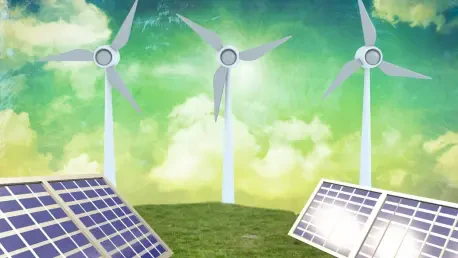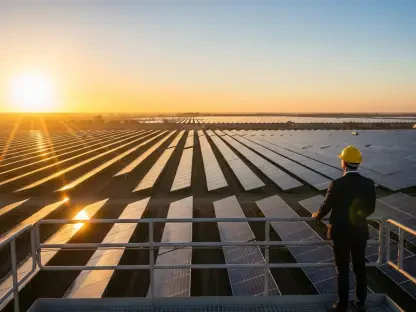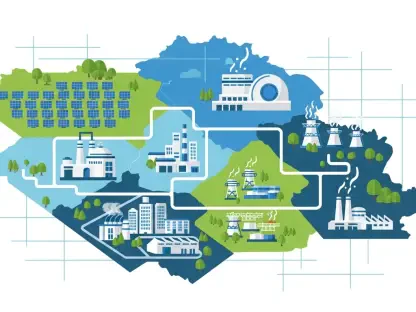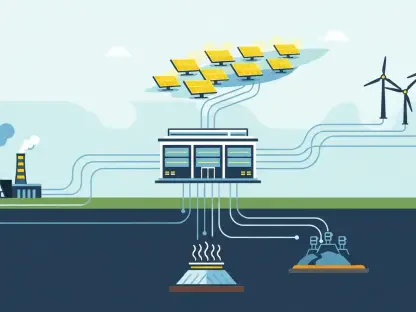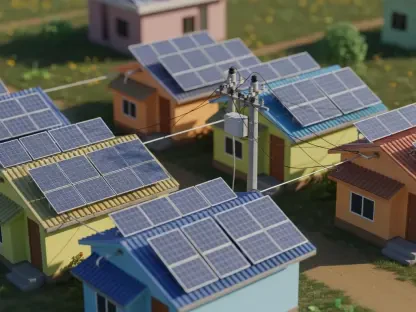I’m thrilled to sit down with Christopher Hailstone, a seasoned expert in energy management and renewable energy, whose deep knowledge of electricity delivery and grid reliability offers invaluable perspectives on the evolving clean energy landscape. With recent changes in federal tax rules under the Trump administration sparking both concern and relief in the solar and wind sectors, Christopher is here to unpack the implications for project developers, investors, and the broader push toward sustainability. In this interview, we’ll explore how these new Treasury Department guidelines redefine project eligibility for tax credits, their impact on market confidence, and what they mean for the future of clean energy development in the United States.
How do the new Treasury Department rules reshape the process for solar and wind projects to qualify for federal tax credits?
The new rules essentially tighten the criteria for what it means to be “under construction,” which is a key requirement to access the 30% federal tax credit. Previously, there was some flexibility in demonstrating progress through financial investment alone. Now, the Treasury Department is emphasizing actual physical work on the project site. This shift means developers must show tangible construction activity—think laying foundations for wind turbines or installing solar panel frameworks—rather than just pointing to capital spent on plans or equipment. It’s a more hands-on benchmark, and while it adds some logistical hurdles, it aims to ensure that projects claiming credits are truly moving forward.
What’s behind the recent surge in stock prices for solar companies following these rule changes?
The uptick in shares for companies like Sunrun and First Solar, with gains of 9% and 8.6% respectively on Monday, reflects a wave of relief among investors. Many in the market had braced for harsher restrictions, so when the rules came out less stringent than anticipated, it boosted confidence. The 4% rise in the MAC Global Solar Energy index further signals that investors see these guidelines as workable. It’s not just blind optimism—there’s a sense that the clean energy sector can adapt to these requirements without derailing growth, and that stability is driving the positive market reaction.
Can you describe the initial concerns that were circulating in the clean energy industry before these rules were finalized?
Absolutely, there was significant anxiety in the industry leading up to this announcement. One major fear was that developers might need to front a huge chunk of project costs—potentially 50% or more—just to qualify for the credits. That kind of upfront financial burden could have sidelined smaller players or delayed projects. Another worry was a compressed timeline for claiming subsidies, with speculation that the window to complete projects after starting construction might shrink dramatically. Those concerns had folks on edge, as they could have fundamentally altered how projects are planned and financed.
How do these new guidelines align with or differ from what the industry was expecting?
Many in the industry, including analysts like Pavel Molchanov from Raymond James, have called these rules “manageable,” which tells you they’re not as draconian as feared. The fact that the Treasury kept the 4-year window for project completion intact was a big sigh of relief for developers—it preserves a reasonable timeframe to navigate construction challenges. While the shift to requiring physical work over mere investment isn’t ideal for everyone, it’s a hurdle that most established players can clear with proper planning. Overall, the guidelines strike a balance that avoids the worst-case scenarios many had envisioned.
Could you break down the deadlines set by the One Big Beautiful Bill Act and their significance for clean energy projects?
Sure, the Act lays out some critical timelines for qualifying for the 30% tax credit. Projects need to begin construction by July of next year, which puts pressure on developers to finalize plans and secure permits quickly. Then, they must enter service—meaning they’re fully operational—by the end of 2027. That’s a tighter schedule compared to the previous law, which allowed credits through 2032. For project planning, this creates a hard stop that forces teams to streamline processes and mitigate delays, whether from supply chain issues or regulatory holdups. It’s a race against the clock, but the potential for bonus incentives on top of the 30% credit is a strong motivator.
Looking at the bigger picture, how do you see these tax credit changes influencing the trajectory of the clean energy sector?
I don’t think these rules will drastically slow down the development of new solar arrays or wind farms, though they’ll certainly require sharper execution from developers. The 30% tax credit, especially with possible bonuses, remains a powerful incentive that can attract investment and offset the added complexity of proving physical progress. In the long run, these changes might even weed out less committed players, focusing resources on projects with solid footing. The sector’s growth is still on track, but it’s going to demand more discipline in how projects are rolled out.
What’s your forecast for the future of federal tax incentives in shaping clean energy development over the next decade?
I believe federal tax incentives will continue to be a linchpin for clean energy growth, though their structure might evolve with political and economic shifts. We’re likely to see ongoing debates about balancing fiscal responsibility with environmental goals, which could mean more targeted or performance-based credits. The current framework, even with its tighter rules, shows that there’s bipartisan recognition of clean energy’s importance, so I expect support to persist in some form. However, developers will need to stay agile—future adjustments could tie incentives more closely to grid integration or carbon reduction metrics, pushing the industry toward even greater innovation.
